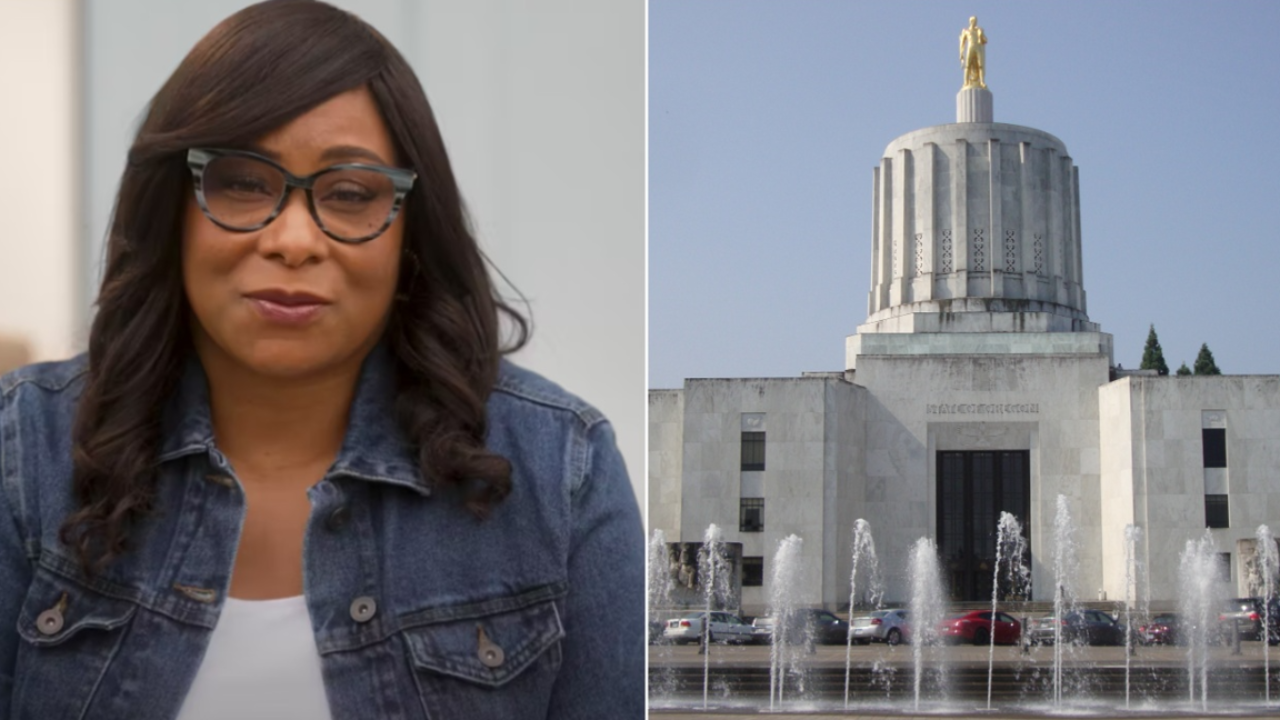COOPER ISLAND — On July 2, George Divoky woke with a polar bear right outside the cabin. He had dressed warmly for sleep in case of an emergency. He rose to grab a shotgun.
Divoky moves stiffly. He is 78. He lifts himself to standing with his arms. Every day of the summer he gets up and down like this dozens of times on the barren gravel of Cooper Island to inspect the nests of black guillemots, weigh chicks and band fledglings. He has worked here for decades, mostly alone, to document how the warming climate has affected these birds in Alaska’s Arctic.
A young bear had come into camp, up to Divoky’s weather-beaten plywood shack, which is no larger than a lawn shed. Another large young bear and the mother were out in the bird colony, among the nests.
Divoky raised his shotgun and fired cracker shells to scare the bears. They ran westward over the table-flat ground, away from the nests and camp.
Out in the colony area, the bears had systematically flipped nest boxes to get at the eggs. Divoky had put out the boxes, cutting holes in hard-shelled plastic suitcases, and for years they had kept the birds mostly safe from bears. But now the bears seemed to have figured them out, or they cared more.
:quality(70)/cloudfront-us-east-1.images.arcpublishing.com/adn/32O5DJ3EXZD67PVDP4VIPXGEEQ.jpg)
:quality(70)/cloudfront-us-east-1.images.arcpublishing.com/adn/BQQ3MVEU55BZTK22BGINYCKLEA.jpg)
Divoky came back in to make coffee and oatmeal on the camp stove. He warmed up. The temperature was in the 40s with an unrelenting, sharp wind, and it wasn’t much warmer inside. Two winters previously, bears had ripped off the back wall of the shack and destroyed the insulation.
When Divoky went out again, bears had been back at the nests. Motion-sensitive cameras showed them shaking the nest boxes until the birds emerged.
He found a guillemot’s severed leg, with one of his tiny dataloggers attached, a device for tracking birds during the winter. He recognized the bands on another leg, which he had attached to a fledgling many years earlier. Gray-green-green. And here were pieces of a bird he thought of as an old friend. He had checked its nest and measured its young every summer since 2002.
Divoky first came to Cooper Island in 1972, and this summer was his 50th consecutive field season. In total, he has logged more than 10 years on the rusty-red gravel.
But perhaps this summer would be his last extended stay. After surveying all the nests July 2, he found that the bears had destroyed half of them. Only 10 remained with eggs. And four adults had died out of only 40 still nesting.
:quality(70)/cloudfront-us-east-1.images.arcpublishing.com/adn/AWVL25I3QBC2PM27K7EZVIL5QY.jpg)
:quality(70)/cloudfront-us-east-1.images.arcpublishing.com/adn/PEWFBAOQ6BBHLMTRXVC5ZZ7OGA.jpg)
:quality(70)/cloudfront-us-east-1.images.arcpublishing.com/adn/6D6LBOGHIVDVTJLOFBNEJOEA6I.jpg)
At one time, there were so many guillemots here that Divoky could barely manage, even with his younger bones. Birds were so plentiful that they would try to build nests under the fly of his tent.
“You should have been here when there was 600 birds and you couldn’t walk,” he said. “There was a time when this cabin had birds all over the roof walking on it, and now I haven’t had one bird land on the cabin this year. I’ve experienced this thing and it was very unique. And I wish I hadn’t.
“But really,” he continued, “You could not look away from the train wreck. It was like, OK, what do you think is going to happen next year?”
He speaks rapidly, without breaks for air, and he isn’t easy to quote, because he jumps from idea to memory to theory and back to a new idea, rarely finishing a step. He’s charming and funny. But he likes to be alone. As a teen in a suburb of Cleveland, he was so anxious about speaking in school he would escape and go watch birds instead.
“There are birds out here that are over 25 years old that I’ve known since they were a nestling,” he said. “If I was in Seattle next June, and not up here — wondering what gray-yellow-green is doing and if it’s still with white-red-white. That’s my universe now. I’d have to satisfy my curiosity.”
• • •
:quality(70)/cloudfront-us-east-1.images.arcpublishing.com/adn/KU6O7MHUHRCYZL45ROWP7TJUVI.jpg)
:quality(70)/cloudfront-us-east-1.images.arcpublishing.com/adn/XSZQ6NK7DBESLI3FQA4W65FHOE.jpg)
Black guillemots spend their entire lives at sea except when they nest. They look much like the pigeon guillemots found in Southcentral Alaska — black and streamlined, with white patches on their wings — but they depend on sea ice, feeding on fish that live at the ice edge. They rarely nest in Arctic Alaska, where the shore is generally flat, because they need rocky cliffsides for protection from predators.
But when Divoky was in his mid-20s, he found a small flock on this island east of Barrow (the town now called Utqiagvik), nesting in wooden crates and ammo boxes left behind by the military. The relatively easy access created an opportunity to study the species.
As a young ornithologist, Divoky observed, banded and measured the birds, daily weighing chicks that look like balls of black down with tiny beaks and claws. Scientifically, he established basic facts.
Most such projects last five years or less. But even when he lost funding, in 1981, Divoky kept his study alive. Long-term data is critical for tracking change in the environment, and he was already seeing change.
:quality(70)/cloudfront-us-east-1.images.arcpublishing.com/adn/J4QJOFURRBGQ5GA6VDU6JPVW4E.jpg)
:quality(70)/cloudfront-us-east-1.images.arcpublishing.com/adn/P4AW35NRUBD7DGG6O4V6ELGZNU.jpg)
:quality(70)/cloudfront-us-east-1.images.arcpublishing.com/adn/U66BSMRJGZG4JJNNQPCEAOMDLU.jpg)
The black guillemot colony was rapidly growing, increasing from a couple of dozen nests to 200 in a decade. There might have been more, but Divoky built only 200 wooden nesting boxes. He didn’t have time to study more than 200 pairs.
Divoky eventually matched the birds’ success to a lengthening summer period without snow. They laid eggs 14 days after snowmelt and needed the ground to remain free of snow until nestlings were ready to fledge. Before the mid-1970s, that period without snow had been iffy, but now it was growing.
Without funding, Divoky slept in a tent on hard, frozen gravel, bundled in layers of vests and parkas against frigid, foggy winds that rarely cease and produce constant noise. The barrier island is utterly flat and devoid of vegetation except for a few grassy patches where Iñupiaq hunters butchered whales long ago, perhaps in ancient times, leaving bones and blood that still fertilize the ground.
:quality(70)/cloudfront-us-east-1.images.arcpublishing.com/adn/V4CDWRH5YFEJNA6X7OHWHOI6PQ.jpg)
No one comes here. It takes more than an hour by boat from Utqiagvik. Some years in the 1980s, Divoky worked on the island for 13 weeks of summer without communications, resupply or human contact. Only his girlfriend in Seattle even knew he was there.
But Divoky said the offseason was harder than time on the island. He could only work jobs that would give him three months free for summer research.
“For the first 25 years of the study, I was in a series of relationships that I wasn’t that happy in, and so I didn’t really miss anything,” he said. “I mean, I did miss people, but they didn’t miss me, which is why they typically started a new relationship in my absence.”
Divoky jests that he created a database on human female mate fidelity at the same time he was learning similar facts about the guillemots. He always has a theory, and his theory is that his 13-week absence interfered with a hormonal bonding period. In 1999, he added, he was lucky to meet Catherine Smith in November, so there was time to complete that process before he left for the island.
:quality(70)/cloudfront-us-east-1.images.arcpublishing.com/adn/XPH4P674YBGJNAELH42A4AIDPE.jpg)
But for all this scientific bravado, the love between Divoky and Smith runs deep. Last April, when he was giving a presentation at Seattle’s Town Hall, Divoky put up a picture of her, when they were first in the Arctic together. Suddenly, he couldn’t speak.
Smith, 70, is a successful appellate attorney in Seattle. Divoky is imaginative and scattered. She is practical and efficient. She goes to the island for visits — she was there when the polar bears came through on July 2 — gently organizing his chaotic space and managing his overlooked details. She follows along, thoroughly wrapped in winter clothes, as he checks the nests.
When they met, Divoky had funding again. His study was unmistakably tracking environmental change. The guillemot colony showed what was happening in the ocean — first as the longer summers had allowed more breeding, and then as the receding ice robbed the birds of food and their numbers began to decline.
Divoky had found one of the first clear biological examples of climate change.
He recalled, at 16, finding a blue jay on his family’s lawn, shivering and incapacitated, and feeling it die in his hands. The trees had just been sprayed with DDT for Dutch elm disease. He read Rachel Carson’s “Silent Spring” and saw how her book helped ban that poison and energized the 1960s environmental movement.
“Early on everyone was thinking, ‘What is going to be the “Silent Spring” book on climate change?’” Divoky said. “What is it that’s going to get people aware that this is a threat?”
And for a time, it looked like it might be his guillemots.
A journalist writing for The New York Times Sunday Magazine came to the island in 2001 and wrote a long article that appeared in January 2002. The piece suddenly made Divoky and his guillemots famous. It told the climate story, but it captured readers’ hearts with Divoky’s story, beginning with a hilarious description of his hapless efforts to protect the tents from polar bears with a sagging tripwire.
Days after the article ran, the David Letterman show called to book Divoky. He flew to New York for the afternoon taping. That evening, someone working for Robert Redford wanted to meet about making a movie. Woody Harrelson also sent word, asking Divoky to come to L.A. — begging him as if for a special favor.
“I’m thinking, if I could fly to L.A. and smoke dope in a hot tub with Woody Harrelson, then the whole reason for doing the study is clear,” Divoky joked.
That never happened, but a book deal for the Times writer did. Divoky appeared on network news shows and Alan Alda’s science show. Later someone wrote a play and Divoky saw himself portrayed walking around Cooper Island, conversing with his younger self, onstage at the Royal National Theatre in London.
But the play flopped and the book was never written, and there never was a movie deal. Cooper Island wasn’t like “Silent Spring.” Climate change isn’t like DDT.
Divoky kept doing his work, with Catherine Smith, who eventually became his wife. He documented the steady decline of the colony and published scientific papers showing climate change linkages. The publicity helped fund his studies through a small nonprofit in Seattle.
But the world largely moved on. As the decades progressed, hurricanes, droughts, wildfires, heat waves, floods and rising seas marked landscapes globally. The federal government listed polar bears as threatened as the sea ice withdrew.
The black guillemot might have been one of the earliest indicators, but Divoky realized that his little colony had become one of the least of all the victims of climate change.
• • •
The polar bears arrived in 2002, after the publicity.
The shorefast ice near Barrow had been weak. That May, 90 Iñupiaq whalers floated away on it, most of them rescued by helicopter. In August, Divoky and his research assistants were living on the island in tents when a storm swept the broken ice pack more than 200 miles from shore, stranding scores of polar bears on the beaches.
:quality(70)/cloudfront-us-east-1.images.arcpublishing.com/adn/AJ7BNENNB5H4LIHGCSTVNDYRHM.jpg)
Polar bears, and their entire food web, depend on ice. Their huge bodies run on seal fat. They have no comparable source of food on land.
When the ice blew away, bears overran Cooper Island and raided the nests. Divoky and his team had no hard-sided shelter. They endured 36 scary hours before calling for a Barrow Search and Rescue helicopter. The next year was the first with the plywood cabin.
:quality(70)/cloudfront-us-east-1.images.arcpublishing.com/adn/IDZTMXTS7JCGJFKNAAJ67HBWYQ.jpg)
Over years, receding ice stranded more bears, which destroyed more nests. A climate shift brought horned puffins north, which killed guillemot chicks for nest space. And the guillemot’s diet became poorer, with fewer ice-associated Arctic cod and more hard-to-digest sculpin.
After 2009, when only one chick survived those threats, Divoky brought in the plastic cases to replace wooden nesting boxes. The cases defeated most of the bears. But the lack of food persisted. The colony continued to shrink.
Again, he held dying birds in his hands — chicks that starved.
Before the 2024 season, his 50th consecutive in the field, the nonprofit printed commemorative T-shirts. Divoky contacted journalists. The ADN decided to go in mid-August, when Divoky and Smith would be shutting down the camp.
Divoky considered leaving after the July 2 loss of nests. It didn’t make sense to spend another six weeks measuring chicks in just 10 nests. But the birds that had lost their nests started to lay eggs a second time, piquing his interest.
Since the permafrost melted on the island, sand has blown around its surface, sometimes blowing into the nesting boxes. In late July, a bear flipped another nest box. Divoky opened this box to find sand had suffocated one of the chicks.
“One of the chicks was not yet dead. One of the chicks was dying,” he said. “I pick up the bird and I thought, well, maybe it’s going to make it. It was gasping and it couldn’t hold itself upright. But I put it back in, thinking, you know, stranger things have happened.”
That afternoon the chick was dead.
“I experienced that death and that polar bear impact in a very different way. And that got me very depressed.”
He thought of the blue jay in his front yard. His work had not turned the tide of opinion on climate change, and here he was, watching the last birds go.
He wrote an email to discourage the journalists’ visit.
“I have found the conditions out here this summer to be among the worst, if not the worst, of any of the half-century of field seasons,” he wrote. “The weather has gotten cold and windy. The excursions to the colony to check nests and weigh chicks are the equivalent of ‘space walks.’ … Some of the recent nights have been too cold and noisy for me to sleep well and I am taking two or three naps during the day to catch up on sleep.”
In 10 days, however, when a boat carrying Smith and a journalist arrived, he had gone back to being cheerful, welcoming, eccentric George Divoky.
It was cold and intermittently foggy with wind and hard rain roaring. The ice was as far away as it had been during the polar bear invasion in 2002, although that was no longer unusual. Divoky seemed blasé about the bears now, relying on driveway motion detectors for warning.
:quality(70)/cloudfront-us-east-1.images.arcpublishing.com/adn/ESEN73KCYJBTRAHIUICXHVSXSY.jpg)
Early morning on Aug. 12, three bears appeared 150 feet away from the cabin, disrupting bird nests.
Divoky and Smith watched from near the door. The bears had become experts. They knew how to turn the boxes to expel the eggs or force the birds out. A mother bear submerged one of the cases to get the bird out. Then she ate it.
The bears were eating as much as they could of these little birds — not playing with them or taking only certain parts, as they once did. They had been eating grass from the few patches on the island. They were hungry.
Divoky didn’t raise the shotgun. He just watched.
:quality(70)/cloudfront-us-east-1.images.arcpublishing.com/adn/NTVGUKJ4PRD5BL3RKAPFM72G3E.jpg)
:quality(70)/cloudfront-us-east-1.images.arcpublishing.com/adn/TAUVTEH3S5GCNHOTHOPPKVPV6I.jpg)
:quality(70)/cloudfront-us-east-1.images.arcpublishing.com/adn/62YN2LXFL5GILAJH254RXLIH7A.jpg)
The bears went from box to box, and from one colony area to the next. They were thorough.
When Divoky and Smith surveyed the damage, nothing was left. Just wings, legs and eggshells. Every nest was destroyed, including those with eggs freshly laid after the first bear attack.
:quality(70)/cloudfront-us-east-1.images.arcpublishing.com/adn/TOC5Y57HMVGPFAORCMFDVZPDDA.jpg)
:quality(70)/cloudfront-us-east-1.images.arcpublishing.com/adn/Y7XPBZDC5VFF3JBAS7AX75IH34.jpg)
:quality(70)/cloudfront-us-east-1.images.arcpublishing.com/adn/NX2NHYHZ2VF5BCH5KLGJSBA5OM.jpg)
:quality(70)/cloudfront-us-east-1.images.arcpublishing.com/adn/HGPA3LJGFNBWBN7D5F3GHWRC7U.jpg)
Back in the cabin, over breakfast, Divoky explained why he hadn’t fired to scare away the bears.
“They may be cubs of the year that came out of the snow den in the spring. It’s no fun to drive them away. They don’t really want to be here. They want to be on the ice, but the ice is melted. I don’t want them in theory to be here. But what am I? To the extent that apparently fewer and fewer people care what I do, or why I do it, or how I do it,” he said.
“Yes, we did put up bear-proof cases to keep the colony going,” he continued, “but it makes no sense to have a bear patrol that tries to stop any bear disturbance now, when bears on-shore are inevitable every year.”
:quality(70)/cloudfront-us-east-1.images.arcpublishing.com/adn/SYDFFRFDMBDF3BLEEPL5MPKRWE.jpg)
:quality(70)/cloudfront-us-east-1.images.arcpublishing.com/adn/D3HVJ3AOEFHEVG22JWNOKSV3FM.jpg)
Now, Divoky said, he and his camp were the interlopers. This harsh island belonged to the bears.
It was time to pack up the camp for the season. Suddenly undetermined were the timing, what mattered, and what to save. Divoky and Smith argued over something trivial. Then he offered her coffee and her voice cracked.
He said, “Come here, come here, come here. It’s going to be OK. OK?”
“Yeah,” she said.
“I mean, we should appreciate, and you should appreciate, since you were here when the bears first showed up, that this is kind of the, I mean, it’s kind of like the logical, if you will, ending.”
Speaking to the ADN journalist’s camera, Divoky explained that it was almost a relief that his summerlong work seasons on the island were over. Asked about that later, Smith said, “He’s trying to talk himself into it.”
“One of the most important things in life is knowing when to leave,” he said that morning. “What’s the day today? Twelfth of August, 2024. That was the day that we don’t have to keep doing this the same way, from now on. And unfortunately, it’s just a climate change signal. It’s possibly one of the least important in terms of the whole global climate change, but it’s been one that we know the arc of, from ‘72, when this colony was nothing, to ‘89, when it was the biggest colony in Alaska, to 2024, when the birds that were still left here, the two dozen pairs, couldn’t raise young because of polar bears, because of sea ice melt.
“And now I’m on the polar bears’ side,” he said. “I’ve become a polar bear advocate. I’m saying I want these polar bears to do well. They’re not going to have the ice much longer. Use the island any way you can, for resting or whatever. But you’re not going to get any guillemots here in the future. And you’ll be able to roam more freely because I won’t be here much at all.”
:quality(70)/cloudfront-us-east-1.images.arcpublishing.com/adn/KA4ES4GQXBDYXKE4NWPE7LMUCU.jpg)
On his return to Seattle, Divoky felt a strange sense of re-entry — again. Throngs of people were rushing around in cars. People in speeding metal boxes. Where were they going? Didn’t they know the cost? Were they as heedless as the polar bears?
He blamed them more than the bears. The polar bears didn’t melt the ice.
For a time, he hid out at his co-working space to avoid showing his depression to Smith. He tried to work on his data, but lost heart.
But then, he started working with a young scientist interested in analyzing his data. He planned a trip to Toronto to view a new documentary, “The Birdman of Cooper Island.”
He began planning his trip back, next year, at least a brief one, to see what happens next.
:quality(70)/cloudfront-us-east-1.images.arcpublishing.com/adn/WFCQT7YDCRHFXIWVVB4ZDJ3CH4.jpg)
Loren Holmes reported from Cooper Island.











:quality(70)/cloudfront-us-east-1.images.arcpublishing.com/adn/J4QJOFURRBGQ5GA6VDU6JPVW4E.jpg)

:quality(70)/cloudfront-us-east-1.images.arcpublishing.com/adn/34P74OEMBZDGDHBSKZAAXZVBRA.jpg)









/cdn.vox-cdn.com/uploads/chorus_asset/file/25439572/VRG_TEC_Textless.jpg)






